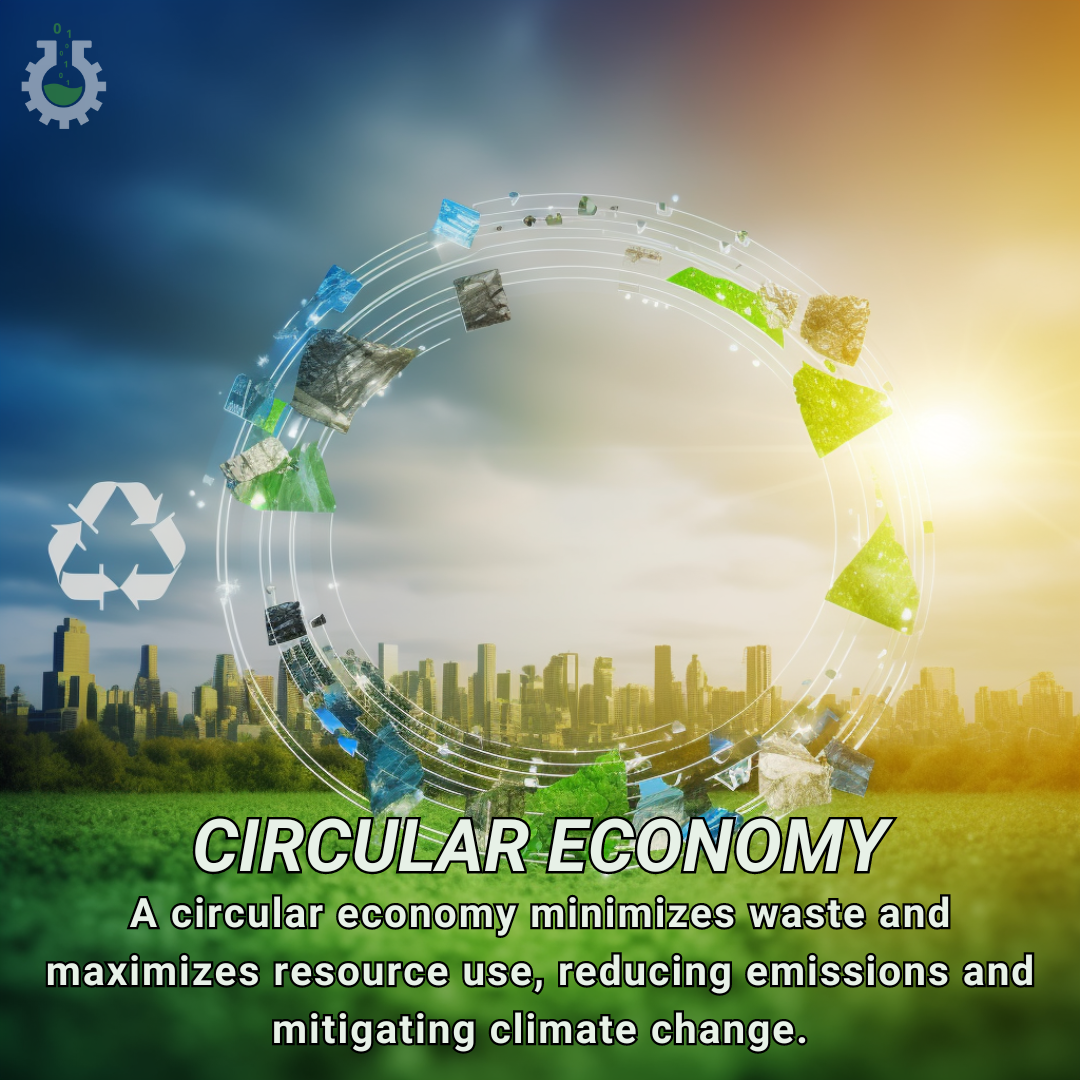May 14, 2024
Climate Change Poster Collection of the Day – Circular Economy
Book a Demo
Today’s Climate Change Poster Collection highlights Circular Economy. The concept of a circular economy is rapidly gaining traction as a sustainable alternative to the traditional linear economy, which follows a ‘take, make, dispose’ model. In contrast, a circular economy emphasizes the need to design out waste and pollution, keep products and materials in use, and regenerate natural systems. This approach not only reduces the environmental footprint of production and consumption but also offers a promising pathway to mitigate climate change. By prioritizing resource efficiency, the circular economy minimizes the extraction of raw materials, which is often associated with significant greenhouse gas emissions. For instance, the mining and processing of raw materials like metals, minerals, and fossil fuels are energy-intensive processes that contribute substantially to global carbon emissions. By reducing the demand for virgin materials through recycling and reusing existing resources, the circular economy can significantly cut down on these emissions.
Additionally, the circular economy promotes the reuse, refurbishment, and recycling of products, thereby extending their lifecycle and reducing the need for energy-intensive manufacturing processes. For example, recycling aluminum saves up to 95% of the energy required to produce it from raw materials, while recycling paper can save up to 60% of the energy compared to making paper from new pulp. This not only conserves energy but also reduces the emissions of carbon dioxide and other greenhouse gases that are released during production. Moreover, the circular economy encourages innovation in product design, making goods more durable, repairable, and easier to disassemble, which can significantly lower carbon emissions over time. Companies are increasingly adopting eco-design principles, creating products that are easier to repair and upgrade, thus prolonging their useful life and reducing the need for new products to be manufactured.
The regenerative aspect of the circular economy also plays a crucial role in climate change mitigation by enhancing soil health and biodiversity through sustainable agricultural practices. Practices such as crop rotation, agroforestry, and the use of organic fertilizers can sequester carbon in the soil, thereby reducing atmospheric carbon dioxide levels. Additionally, these practices can improve soil fertility and water retention, making agricultural systems more resilient to the impacts of climate change, such as droughts and floods. By closing the loop, the circular economy not only addresses the urgent need to reduce waste and pollution but also contributes to a more resilient and low-carbon future, aligning economic activities with the planet’s ecological boundaries.
Furthermore, the circular economy has the potential to drive economic growth and create jobs. By fostering new business models such as product-as-a-service, sharing platforms, and reverse logistics, it opens up new opportunities for innovation and entrepreneurship. For example, companies that offer products as a service retain ownership of their goods and are responsible for their maintenance and end-of-life management, incentivizing them to design products that are more durable and easier to repair. This shift can lead to the creation of new jobs in repair, refurbishment, and recycling industries, contributing to a more inclusive and sustainable economy.
In the context of climate change, the circular economy represents a holistic approach that addresses both the symptoms and root causes of environmental degradation. It challenges the conventional wisdom of endless economic growth and resource consumption, advocating for a more balanced and sustainable way of living. By integrating circular principles into our economic systems, we can reduce our reliance on finite resources, decrease greenhouse gas emissions, and build a more resilient and sustainable future. Thus, embracing a circular economy is not just an environmental imperative but also a strategic response to the global climate crisis, fostering a sustainable and equitable world for future generations. As we stand at the crossroads of environmental and economic challenges, the circular economy offers a viable and hopeful path forward, aligning human activities with the planet’s natural cycles and ensuring a thriving future for all.
Discover an inspiring collection of climate change poster.



